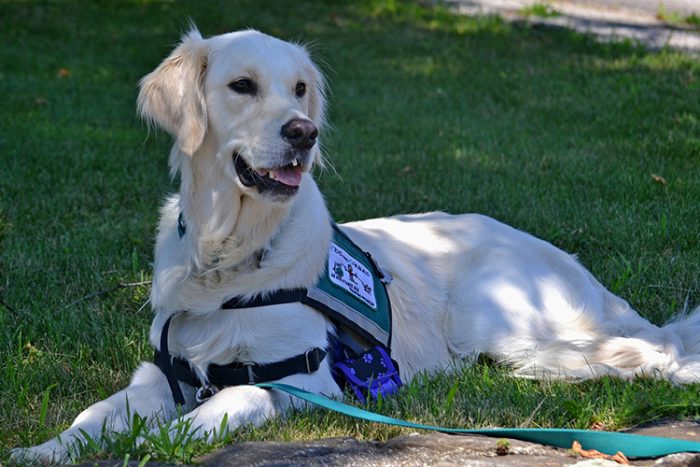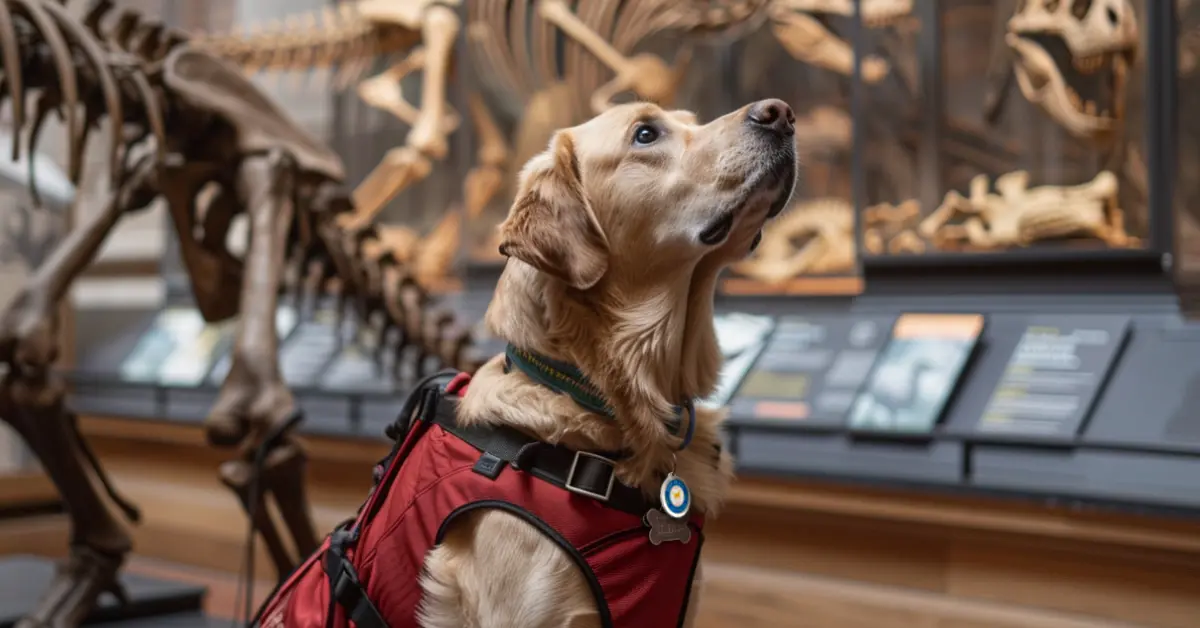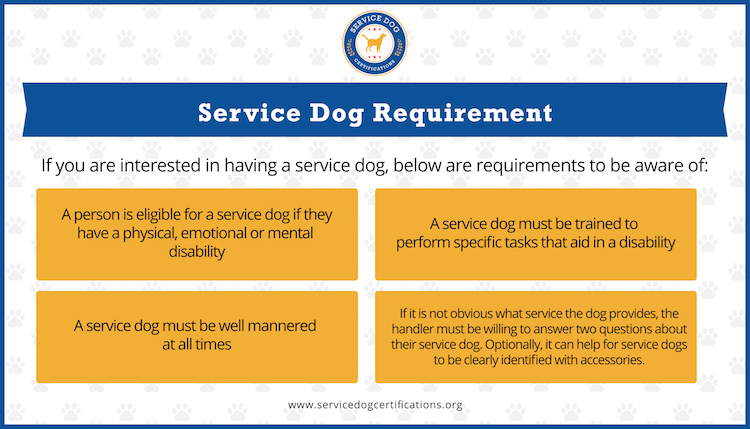Mobility Service Dogs Guide

Service dogs are more than a man’s best friend; they can be a man’s lifesaver. Mobility service dogs or mobility assistance dogs, in particular, save lives and improve a disabled person’s quality of life. Whether it is preventing their handler from falling or carrying objects to their handler, mobility service dogs open up a world that would otherwise be, quite literally, out of their handler’s reach.

Table of Contents
- What Does a Mobility Service Dog Do?
- Mobility Assistance Tasks
- Emergency Assistance Tasks
- How Big Should a Mobility Service Dog Be?
- How Long Does It Take to Train a Mobility Service Dog?
- Who Can Benefit From a Mobility Service Dog?
What Does a Mobility Service Dog Do?
Mobility service dogs, also known as brace service dogs or Brace and Mobility Support Dogs (BMSD), are trained to help their owner moving around or obtaining items. These assistance animals receive additional training to perform tasks that make the life of individuals with mobility issues easier.
Mobility Assistance Tasks
Mobility service dogs can help to “brace” their owner. Bracing means helping to keep a person from falling or to assist them to sit or stand upright. Other tasks a mobility service dog can do are:
- Opening and closing exit doors and cabinet doors, sometimes by using ropes or special latches.
- Pushing buttons and flipping light switches when needed. For instance, when in an elevator or automated door.
- Fetching, carrying, or placing items down when told, particularly in situations when things are out of reach.
- Assisting a person in a wheelchair.
- Provide physical support by maintaining balance when their owner feels weak, dizzy, or if they are prone to falling.
- Assists their owner to stand up or remain upright by physically bracing them or pushing and pulling them.
- Serve as a counterbalance or assist their owner in walking in a straight line to avoid bumping into things.
A mobility service dog can change the world for a person with mobility issues, enabling them to perform daily living activities.
– ServiceDogCertifications.org
Emergency Assistance Tasks
In cases of emergency or if their owner falls mobility dogs are trained to react in the following ways:
- Bark to notify bystanders or other people in the home of an emergency and the need for assistance.
- Initiates call to 911, opens the door, or barks to alert first responders where their owner is located.
- Retrieve emergency medication.
- Stand over their owner to prevent them from being injured or stepped on.
- Nudge their owner into a recovery or safety position.
- Perform emergency tasks such as removing their owner’s clothing during temperature spikes or warming them during rapid temperature drops.
Finally, as with all dogs, mobility service dogs offer companionship, loyalty, and connection to their owners—which can help lift their owner’s spirits.
How Big Should a Mobility Service Dog Be?
Ideally, an owner shouldn’t place their full weight on their mobility assistance animal. However, because unforeseen events do happen, a service dog should be a larger-statured dog to safely perform their tasks, with both their well-being and their owner’s safety in mind. According to the International Association of Assistance Dog Partners (IAADP), a mobility assistance animal should be at least 22″ tall and weigh at least 55 pounds to assist a child or a petite woman. For average adults, a service dog assisting with mobility should be over 60 pounds.
The size of a mobility service dog ultimately depends on the size and needs of the person they’re working for. For example, a dog required only for retrieval purposes and not for falls assistance can be smaller. Service dogs used for bracing falls, however, may need to be 27 inches or taller, depending on the height of their owner. Ensuring that the dog’s size is compatible with the job required will keep both the dog and the owner safe.

How Long Does It Take to Train a Mobility Service Dog?
Knowing how vital and life-changing the work of a mobility service dog is, it’s no wonder that these working dogs require extensive training. Unfortunately, there is no way to obtain a quality service dog quickly or cheaply. According to IAADP, training a mobility service dog may take a minimum of 120 hours of training. Depending on the skills necessary, service dog training may take at least six months. An additional 30 hours of training in a public setting also helps a mobility service dog execute their skills in a community environment without being intrusive with others.

Who Can Benefit From a Mobility Service Dog?
As mobility service dogs have a wide variety of skills, they’re ideal for helping with many disabilities and disorders. The following are examples of a few conditions that can benefit from a mobility service dog:
- Arthritis
- Spinal Cord Injury
- Vertigo
- Migraine
- Visual Impairment
- Brain injury
- Heart Disorders
- Muscular Dystrophy
- Parkinson’s Disease
- Gait Problems
If you or someone you love suffers from any of these conditions, a mobility service dog may be the right choice.
Show everyone your mobility service dog is an important part of your daily life with your Service Dog ID. Get your mobility service dog registered below.
About the Author: The writing team at Service Dog Certifications is made up of folks who really know their stuff when it comes to disability laws and assistance animals. Many of our writers and editors have service dogs themselves and share insights from their own experiences. All of us have a passion for disability rights and animals.
Latest Posts

Can you bring a service dog to a museum?
Yes, you can bring your service dog to the museum! All the major U.S. museums welcome guests with service animals in accordance with the Americans with Disabilities Act (ADA). There are some areas, however, that might be off-limits. Here’s what you should know if you plan to spend a day at the museum with your […]

Read More

How to Bring a Service Dog to Six Flags Magic Mountain
Service dogs are welcome at Six Flags Magic Mountain so long as they are, according to Six Flags, “trained to do work or perform tasks for people with disabilities.” Of course, your dog must be housebroken and remain on a leash or harness and under your control while at the park — and the park […]

Read More

When Stores Can Refuse Your Service Dog
According to the Americans with Disabilities Act (ADA), service dogs should be allowed into any store most of the time. A store owner can legally exclude a service dog if they are actively growling, snapping at, or frightening customers, or if the dog is obviously out of the control of its owner. Ordinary behaviors — […]

Read More



